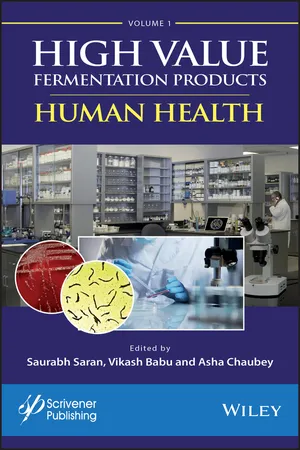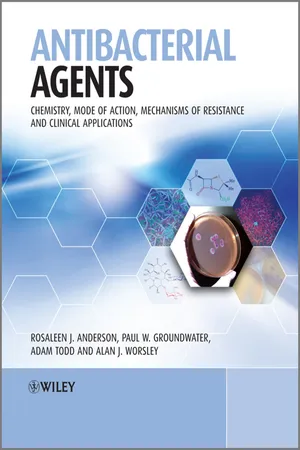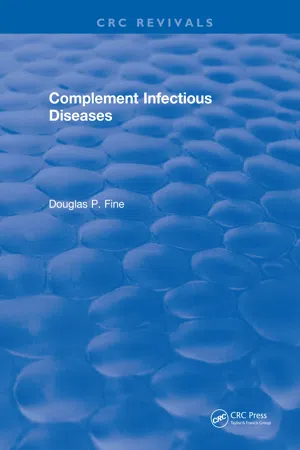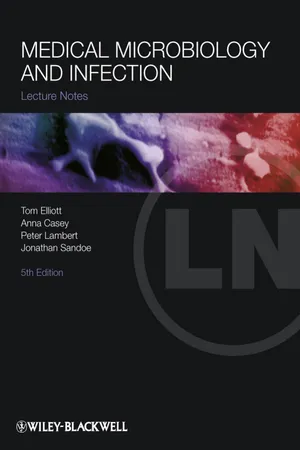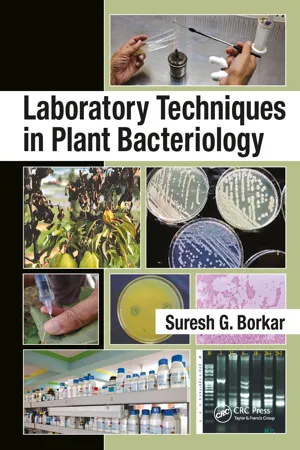Biological Sciences
Gram Positive Bacteria
Gram positive bacteria are a group of bacteria that have a thick layer of peptidoglycan in their cell walls, which retains the crystal violet stain in the Gram staining process. This characteristic gives them a purple color when viewed under a microscope. They are known for causing various infections in humans and animals, and some species are used in the production of antibiotics and fermented foods.
Written by Perlego with AI-assistance
Related key terms
Related key terms
1 of 4
Related key terms
1 of 3
9 Key excerpts on "Gram Positive Bacteria"
- eBook - ePub
Microbial Food Safety
A Food Systems Approach
- Charlene Wolf-Hall, William Nganje(Authors)
- 2017(Publication Date)
- CAB International(Publisher)
6 Gram-Positive BacteriaKey Questions• Which Gram-positive bacteria are of most concern for microbial food safety?• What are the mechanisms by which these Gram-positive bacteria cause illness?• What are the hazards these Gram-positive bacteria present to consumers?• What controls are available to prevent foodborne illness due to these Gram-positive bacteria?The Difference Between Gram-Positive and Gram-Negative Bacteria
Hans Christian Gram was the Danish scientist who, in 1884, published a method for a staining technique to help better see bacteria in tissue samples under the microscope. An unanticipated result of this technique was a way to differentiate two major groups of bacteria based on their cell wall compositions.Bacterial cell membranes that contain thick layers of peptidoglycan are able to retain the crystal violet stain used in the method, resulting in purple- or violet-stained cells that are described as Gram positive. Bacteria that contain less peptidoglycan in their cell membranes are unable to retain the crystal violet stain after the destaining step of the procedure, and as a result of counter-staining with safranin dye appear red or pink, and are described as Gram negative. As with all microbiological testing methods, there are limitations and some bacterial species may produce Gram-variable results, indicating an ability to stain with either reaction result and not provide a clear distinctive result.Gram staining is a preliminary test used on bacterial cultures to give clues to the identity of the species. The Gram reaction is a first clue, and then other clues like the microscopic cell morphology or shape and placement can provide other clues. The remainder of this chapter will focus on those bacterial pathogens of most concern in foods that fall under the category of Gram positive, and Chapter 7 - eBook - ePub
High Value Fermentation Products, Volume 1
Human Health
- Saurabh Saran, Vikash Babu, Asha Chaubey, Saurabh Saran, Vikash Babu, Asha Chaubey(Authors)
- 2019(Publication Date)
- Wiley-Scrivener(Publisher)
These are those classes of bacteria which retain the purple color on Gram staining. The cell wall of bacteria plays an important role in the pathogenicity. Figure 3.1 shows representation of the arrangement of components in the cell walls of Gram-positive bacteria. Gram-positive cell walls have an open, hydrophilic structure that retains the cell shape during isolation and purification. The key component of cell wall is peptidoglycan, that covered 50% of the weight of the wall. Linear anionic polymers, termed teichoic or teichuronic acids, are covalently associated to the peptidoglycan, giving the wall a net negative charge. Teichoic acids are linear polymers of repeating units of ribitol or glycerol units linked by phosphodiesters. Teichuronic acids do not contain any phosphate; in its place, they are made up from linear chains of sugar units containing uronic acid residues. Additional key form of teichoic acid found in the Gram-positive cell wall is lipoteichoic acid (LTA). LTA is a glycerolphosphate teichoic acid chain linked covalently to a glycolipid (typically a glycosyl diglyceride) situated on the external face of the cytoplasmic membrane. The glycerophosphate chain extends over the cellwall and is exposed on the cell surface. A number of functionally major proteins are also found both covalently and noncovalently linked to peptidoglycan. These mediate interactions between cells and their environment. Many pathogens cooperate precisely with host cells and tissues in infections by creating surface exposed proteins that bind to host proteins. Some Gram Positive Bacteria generate capsular polysaccharides, that are loosely connected to the cell wall - eBook - ePub
- Vincent A. Fischetti, Richard P. Novick, Joseph J. Ferretti, Daniel A. Portnoy, Mirian Braunstein, Julian I. Rood, Vincent A. Fischetti, Richard P. Novick, Joseph J. Ferretti, Daniel A. Portnoy, Mirian Braunstein, Julian I. Rood(Authors)
- 2019(Publication Date)
- ASM Press(Publisher)
The Gram-Positive Bacterial Cell Wall
Manfred Rohde 1HISTORICAL BACKGROUND
In 1884, the Danish bacteriologist Hans Christian Gram developed a staining procedure to view stained bacteriaunder the light microscope (1 ). His staining method, nowadays simply called Gram staining, discriminated between a Gram-positive and Gram-negative bacterial cell wall. He introduced a dye, gentian violet, which penetrates the cell wall and cytoplasmic membrane, thus staining the cytoplasm of the heat-fixed bacteria. After addition of iodine, an insoluble complex is formed which is retained by the Gram-positive bacterial cell wall upon addition of a decolorizer such as ethanol. Therefore, Gram-positive bacteria appear almost purple, while Gram-negative bacteria retain the dye to a lesser extent or not at all and have to be counterstained with a second dye, safranin or fuchsine, appearing pink or reddish. It is noteworthy that some mycobacteria showed an indifferent staining behavior when Gram stained, suggesting that the cell wall of mycobacteria might be somehow different from the other two types. In the following decades, it became obvious that cell walls/cell envelopes are more diverse and that Gram staining alone often could lead to misinterpretations of the cell wall composition.Before the early 1950s, when the chemical composition of bacterial cell walls was not known, it was speculated that chitin or cellulose, polymers recognized as providing rigid structures to other organisms, might also represent the building material of the bacterial cell wall. In 1951, experiments with a phenol-insoluble material from Corynebacterium diphtheria (2 ) revealed glucosamine and diaminopimelic acid as components of the bacterial cell wall which are associated with polysaccharides. Chemical examination of streptococcal cell wall layers highlighted the presence of amino acids and hexosamines in the cell wall extract, as well as rhamnose as a main component in Gram-positive bacteria (3 , 4 ). Systematic analyses of a number of Gram-positive bacteria identified the hexosamines glucosamine and muramic acid as major components together with three prevalent amino acids, namely, d-alanine, lysine or diaminopimelic acid, and glutamic acid. By then, a typical basic basal unit in Gram-positive cell walls was also recognized in which glucosamine and muramic acid are linked with three amino acids via a peptide bond (5 , 6 ). Gram-negative bacteria express the identical basal unit. Numerous analyses of other bacteria revealed that each bacterial genus or even species is often characterized by a distinctive pattern of amino acids, amino sugars, and sugars connected to the basic basal unit. It was believed that these differences should provide a valuable pattern to discriminate between bacterial genera/species (7 , 8 ). Over the following years other compounds of the Gram-positive cell wall were recognized, such as teichoic acids (TAs), which are polyribitol phosphates (9 - eBook - ePub
Antibacterial Agents
Chemistry, Mode of Action, Mechanisms of Resistance and Clinical Applications
- Rosaleen Anderson, Paul W. Groundwater, Adam Todd, Alan Worsley(Authors)
- 2012(Publication Date)
- Wiley(Publisher)
Section 1 Introduction to Microorganisms and Antibacterial ChemotherapyPassage contains an image Chapter 1.1 Microorganisms
Key Points- Bacteria can be classified according to their staining by the Gram stain (Gram positive, Gram negative, and mycobacteria) and their shape.
- Most bacterial (prokaryotic) cells differ from mammalian (eukaryotic) cells in that they have a cell wall and cell membrane, have no nucleus or organelles, and have different biochemistry.
- Bacteria can be identified by microscopy, or by using chromogenic (or fluorogenic) media or molecular diagnostic methods (e.g. real-time polymerase chain reaction (PCR)).
- Bacterial resistance to an antibacterial agent can occur as the result of alterations to a target enzyme or protein, alterations to the drug structure, and alterations to an efflux pump or porin.
- Antibiotic stewardship programmes are designed to optimise antimicrobial prescribing in order to improve individual patient care and slow the spread of antimicrobial resistance.
1.1.1 Classification
There are two basic cell types: prokaryotes and eukaryotes, with prokaryotes predating the more complex eukaryotes on earth by billions of years. Bacteria are prokaryotes, while plants, animals, and fungi (including yeasts) are eukaryotes. For our purposes in the remainder of this book, we will further subdivide bacteria into Gram positive, Gram negative, and mycobacteria (we will discuss prokaryotic cell shapes a little later).As you are probably already aware, we can use the Gram stain to distinguish between groups of bacteria, with Gram positive being stained dark purple or violet when treated with Gentian violet then iodine/potassium iodide (Figures 1.1.1 and 1.1.2 - eBook - ePub
- Douglas P. Fine(Author)
- 2018(Publication Date)
- CRC Press(Publisher)
Many bacteria can be segregated on the basis of the Gram stain. Gram-positive organisms retain the dye crystal violet; in contrast, the dye is washed out of Gramnegative bacteria by acetone-alcohol. This seemingly trivial difference reflects profound differences in biological behavior between Gram-positive and Gram-negative bacteria. To a great extent, these differences are due to the structure of the respective cell walls.1. Gram-Positive Bacteria
Cell walls of Gram-positive bacteria are thick, poorly defined structures, comprised mostly of peptidoglycan. The nonpeptidoglycan portion includes a wide variety of polysaccharides and teichoic acids, which are covalently bound to the peptidoglycan.5Teichoic acid is the collective name for water-soluble polymers of ribitol or glycerol phosphate linked by phosphodiester bonds. Variability among teichoic acids is conferred by side chains. Glycerol teichoic acids are found intracellularly associated with plasma membranes of all Gram-positive bacteria as well as in the cell walls. Ribitol teichoic acids are limited to cell walls. Though apparently not critical to structural integrity of the cell wall, the teichoic acids may be important in ion transport. Because the teichoic acids are highly antigenic, they contribute greatly to serological differences among Gram-positive bacteria.7Table 1 AN ORGANIZED LIST OF BACTERIAL GENERA PERTINENT TO THIS MONOGRAPH12. Gram-Negative Bacteria
Whereas the cell walls of Gram-positive bacteria are somewhat amorphous and composed largely of peptidoglycan, the cell walls of Gram-negative bacteria are highly structured and peptidoglycan is a relatively minor constituent. A thin peptidoglycan layer lies just outside the plasma membrane; the two may be linked in some way. Outside and covalently linked to the peptidoglycan are two layers of lipopolysaccharides and lipoproteins. These three layers and the intervening spaces can be readily demonstrated by electron microscopy.5 - eBook - ePub
- Tom Elliott, Anna Casey, Peter A. Lambert, Jonathan Sandoe(Authors)
- 2012(Publication Date)
- Wiley-Blackwell(Publisher)
Part 1 Basic MicrobiologyPassage contains an image Chapter 1 Basic Bacteriology Peter Lambert Aston University, Birmingham, UK
Bacterial Structure
Bacteria are single-celled prokaryotic microorganisms, and their DNA is not contained within a separate nucleus as in eukaryotic cells. They are approximately 0.1–10.0 μm in size (Figure 1.1 ) and exist in various shapes, including spheres (cocci), curves, spirals and rods (bacilli) (Figure 1.2 ). These characteristic shapes are used to classify and identify bacteria. The appearance of bacteria following the Gram stain is also used for identification. Bacteria which stain purple/blue are termed Gram-positive, whereas those that stain pink/red are termed Gram-negative. This difference in response to the Gram stain results from the composition of the cell envelope (wall) (Figure 1.3 ), which are described below.Figure 1.1 Shape and size of some clinically important bacteria.Figure 1.2 Some bacterial shapes.Figure 1.3 A section of a typical bacterial cell.Cell Envelope
Cytoplasmic Membrane
A cytoplasmic membrane surrounds the cytoplasm of all bacterial cells and are composed of protein and phospholipid; they resemble the membrane surrounding mammalian (eukaryotic) cells but lack sterols. The phospholipids form a bilayer into which proteins are embedded, some spanning the membrane. The membrane carries out many functions, including the synthesis and export of cell-wall components, respiration, secretion of extracellular enzymes and toxins, and the uptake of nutrients by active transport mechanisms.Mesosomes - eBook - ePub
Scott-Brown's Otorhinolaryngology and Head and Neck Surgery
Volume 1: Basic Sciences, Endocrine Surgery, Rhinology
- John Watkinson, Ray Clarke, John C Watkinson, Ray W Clarke(Authors)
- 2018(Publication Date)
- CRC Press(Publisher)
Another more rapid diagnostic technique that has recently come into routine use in many laboratories is matrix-assisted laser desorption/ionization and time of flight analysis, or MALDI-TOF, which uses mass spectrometry to measure species-specific profiles of biomolecules, such as peptides and sugars, and larger organic molecules following laser ionization of a sample absorbed onto a specific test matrix. This is currently only possible from a pure culture, but may become available as a technique usable directly on clinical samples.In the future, whole genome sequencing may come to supersede conventional culture techniques entirely, as it is able to not only identify bacterial species directly from clinical samples, but is also able to deliver a full profile of antimicrobial resistance. This has the benefit of identifying genes responsible for resistance (genotype) as opposed to current conventional susceptibility testing that detects phenotypic resistance.Classification of bacterial organisms
The Gram stain continues to be one of the most frequently used and simple tests performed in clinical microbiology laboratory practice, and gram staining of pus and tissue samples can provide vital early information on possible causative organisms in an infective process.Figure 19.3provides an overview of gram positive organisms and gram negative organisms (Figure 19.5) commonly encountered in clinical practice.Figure 19.3 Overview of medically important Gram positive organisms.Gram positive organisms
Staphylococci
Staphylococci are Gram positive, catalase positive organisms that on microscopy after Gram staining lie together in clusters, reflecting the fact that they are able to divide in more than one geometrical plane. Staphylococcal species form part of the normal skin flora.There are several species of coagulase negative staphylococci. Most are skin commensals with low pathogenic potential, although they are able to cause indolent infections of intravascular devices and implants. An exception to this is Staphylococcus lugdunensis , which although coagulase negative, produces infections which present clinically much like infections with Staphylococcus aureus .S. aureus - eBook - ePub
Microbiology and Molecular Diagnosis in Pathology
A Comprehensive Review for Board Preparation, Certification and Clinical Practice
- Audrey Wanger, Violeta Chavez, Richard Huang, Amer Wahed, Amitava Dasgupta, Jeffrey K. Actor(Authors)
- 2017(Publication Date)
- Elsevier(Publisher)
Chapter 6Overview of Bacteria
Abstract
This chapter will deal with all common Gram-positive and Gram-negative bacteria, as well as Enterobacteriaceae, anaerobes, and mycobacteria and their role in infective patients. Drugs which are used in treating such infections will also be addressed.Keywords
Bacterial infections; Gram positive; Gram negative; Enterobacteriaceae; anaerobes; mycobacteriaContentsIntroduction 76Diagnostic Approach 77Gram-Positive Bacteria 77Coagulase positive Staphylococcus78Staphylococcus species Not Staphylococcus aureus78Streptococci 79Mutans group (e.g., Streptococcus mutans )83Salivarius group (e.g., Streptococcus salivarius )83Anginosus group (e.g., Streptococcus anginosis )83Catalase negative gram-positive cocci 83Vancomycin resistant gram-positive cocci 84Gram-Positive Bacilli 84Gram positive, endospore-forming bacilli 87Aerobic gram positive, nonendospore-forming bacilli 87Weakly acid fast bacteria 88Nocardia spp.89Streptomyces89Rhodococcus spp.89Mycobacteria spp.89Nontuberculous mycobacteria 91Photochromogens 91Scotochromogens 92Nonphotochromogens 92Rapid growers—Mycobacterium fortuitum , Mycobacterium chelonae/Mycobacterium abscessus, Mycobacterium mucogenicum92Skin mycobacteria—Mycobacterium marinum, Mycobacterium haemophilum , and Mycobacterium ulcerans93Gram-Negative Bacteria 93Lactose fermenters 95Slow/nonlactose fermenters 96Nonenterobacteriaceae 97Neisseria spp.98Gram-Negative Bacilli 99Pseudomonas aeruginosa99Burkholderia spp.99Vibrio100Aeromonas100Plesiomonas shigelloides100Fastidious gram-negative rods 101HACEK organisms: Aggregatibacter - eBook - ePub
- Suresh G. Borkar(Author)
- 2017(Publication Date)
- CRC Press(Publisher)
The Gram stain is a differential stain developed by Dr. Hans Christian Gram, a Danish physician, in 1884. The staining is called Gram staining, after Dr. Gram. It is a very useful stain for identifying and classifying bacteria into two major groups: Gram-positive and Gram-negative.In this process, the fixed bacterial smear is subjected to four different reagents in the order listed: Crystal violet (primary stain), iodine solution (mordant), alcohol (decolorizing agent), and safranin (counterstain). The bacteria which retain the primary stain (appears dark blue or violet) are called Gram-positive, whereas those that lose the crystal violet and get counterstained safranin are referred to as Gram-negative.The differences in staining responses to the Gram stain can be related to the chemical and physical differences in the bacterial cell walls. The Gram-negative bacterial cell wall is a thin, complex, multilayered structure and contains relatively high lipid content, in addition to protein and mucopeptides. The higher amount of lipids is readily dissolved by alcohol, resulting in the formation of large pores in the cell wall that do not close appreciably on dehydration of cell-wall proteins, thus facilitating the leakage of the crystal violet–iodine (CV-I) complex and resulting in the decolorization of the bacterium, which later takes the counterstain and appears red. In contrast the Gram-positive cell walls are thick and chemically simple, composed mainly of protein and cross-linked mucopeptides. When treated with alcohol, it causes dehydration and closure of cell wall pores, thereby not allowing the loss of the CV-I complex, and so the cells remain purple.Material RequiredCultures of test bacterium that are 24 or fewer hours old, Gram staining reagents crystal violet, Gram’s iodine solution, 95 percent ethyl alcohol, safranin, staining tray, wash bottle of distilled water, droppers, inoculating loop, glass slides, blotting paper/absorbent paper, tissue paper, Bunsen burner/spirit lamp, microscope.ProcedureMake thin smears of test bacterium on glass slides. Let the smears air dry. Heat fix the smears. Hold the smears using a slide rack or clothes pin. Cover the smear with crystal violet for 30 seconds. Wash the slide with distilled water for a few seconds using the wash bottle. Cover the smear with Gram’s iodine solution for 60 seconds. Wash off the iodine solution with 95 percent ethyl alcohol. Add ethyl alcohol drop by drop, until no more color flows from the smear. (The Gram-positive bacteria are not affected while all Gram-negative bacteria are completely decolorized.) Wash the slides with distilled water and drain. Apply safranin to smears for 30 seconds (counterstaining). Wash with distilled water and blot dry with absorbent paper. Let the stained slides air dry.
Index pages curate the most relevant extracts from our library of academic textbooks. They’ve been created using an in-house natural language model (NLM), each adding context and meaning to key research topics.
Explore more topic indexes
Explore more topic indexes
1 of 6
Explore more topic indexes
1 of 4

